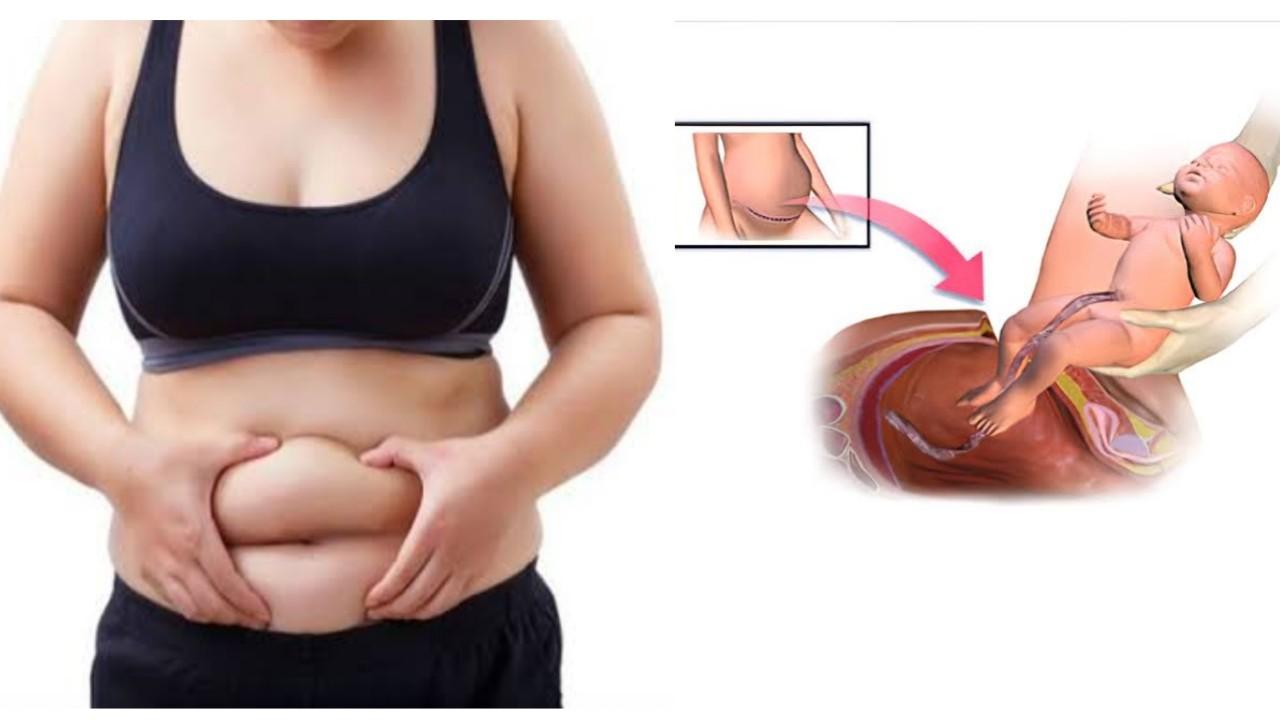A cesarean delivery — also known as a C-section or cesarean section — is the surgical delivery of a baby. It involves one incision in the mother’s abdomen and another in the uterus.
It’s a common procedure that’s used to deliver nearly one-third of babies in the United States, according to the Centers for Disease Control and Prevention.
Cesarean deliveries are generally avoided before 39 weeks of pregnancy so the child has proper time to develop in the womb. Sometimes, however, complications arise and a cesarean delivery must be performed prior to 39 weeks.
Cesarean delivery is typically performed when complications from pregnancy make traditional vaginal birth difficult or put the mother or child at risk.
Sometimes, cesarean deliveries are planned early in the pregnancy, but they’re most often performed when complications arise during labor.
Reasons for cesarean delivery include:
- The baby has developmental conditions
- baby’s head is too big for the birth canal
- the baby is coming out feet first (breech birth)
- early pregnancy complications
- mother’s health problems, such as high blood pressure or unstable heart disease
- mother has active genital herpes that could be transmitted to the baby
- previous cesarean delivery
- problems with the placenta, such as placental abruption or placenta previa
- problems with the umbilical cord
- reduced oxygen supply to the baby
- stalled labor
- the baby is coming out shoulder first (transverse labor).
What is a Hanging Belly?
Hanging belly also known as a pannus stomach or mother’s apron occurs when the belly and fat surrounding the internal organs expands due to weight gain or pregnancy, resulting in additional fat deposits in the omentum (an apron-like flap under your abdominal muscles and in front of your intestines.)
The size of a hanging belly can vary, ranging from hanging to the top of the pubic area to the upper thighs or even a person’s knees. Two potential causes of hanging belly are giving birth and gaining weight.
Hanging belly can increase the risk of certain cancers, including ovarian cancer. It has also been associated with heart disease and type 2 diabetes. As such, it can be beneficial to address your hanging belly. Of course, it may also cause you emotional or physical discomfort, which can also be addressed.
How To Get Rid Of Hanging Belly After C Section
Monitor your calories: To lose a hanging belly, you need to eat fewer calories than you burn. Studies show that those who log their food lose more weight and maintain their weight better. There are lots of apps and websites out there to help you by providing quick and easy ways to log the food and calorie count what you eat on the go, wherever you are. The following tips can help:
- Avoid fried, processed, or pre-packaged foods as much as possible.
- Build a plant-based diet plan.
- Reduce your portion sizes.
- Eat the vegetables in your meal first.
- Avoid alcohol as much as possible.
Exercise: The fat cells stored in your stomach hanging belly are energy fuels that are meant for burning – so use it to lose it! This is going to take dedication, effort, and discipline. To lose stomach hanging belly, you have to burn fat cells in both the fat you can see directly under the skin and also the more dangerous fat that you can’t see that surrounds your organs.
Cardio such as swimming, aerobics, running, or dancing will burn this excess fat store. HIIT (High-Intensity Interval Training) is the fastest way to trim down stomach fat. For example, studies have shown that it is best to do short bursts of exercise, such as sprinting for 10 seconds on a treadmill and then walking for 20 seconds.
Exercises such as oblique twists, planking, and crunches will also tone the lower stomach area.
Everyone is sure to like the idea of burning fat even when you are resting! You can do this by weight training. When you are building lean muscle mass your body keeps on burning that fat even when you are in the recovery phase after your session.
When beginning to weight train, you should ask a trainer to create a program for you that focuses on the abdominal muscles. You can then create a ‘corset’ of muscles to hold you in for a flatter stomach.
NOTE: If you’ve had a C-section delivery, DO NOT jump into your post-pregnancy exercise regimen until at least six weeks postpartum, after you’ve visited your health care provider and he or she has given the all-clear. If you exercise too early after a C-section, you might not allow the fascia to heal properly. This can lead to a hole forming in the fascia. As you could imagine, this is problematic. If your fascial incision opens up, you can develop an incisional hernia.
Avoid stress: When you are stressed your body takes on a ‘fight or flight’ survival mode. You get a sudden influx of stress hormones including insulin and cortisol. You will then find yourself craving sweet foods such as chocolate and ice cream and salty foods such as crisps and highly processed junk food. Your body will then store those calories as a survival deposit – often on the stomach area.
Try CoolSculpting: CoolSculpting offers a non-surgical approach to getting rid of hanging belly, consider a course of CoolSculpting treatments. CoolSculpting is carried out without anesthetic and there’s no downtime necessary after the procedure. Precisely controlled cooling is delivered to the stomach area, crystallizing the fat cells which are then naturally eliminated from your body. You’re left with a sculpted stomach, with no side effects from surgery.
CoolSculpting is also ideal to treat stubborn areas such as the upper arms, inner and outer thighs, and even under the chin.





